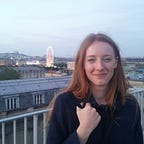Kodako: The “Swiss army knife” of the newsroom
Le Parisien Editors Lab in 2015 was the starting point for Le Parisien’s team of coders and editors to work together to make a structurally rich and game-changing newsroom tool. The collaborative data collection tool (“Co-da-co”) allows reporters to publish and update data instantly into a widget of their choice, directly from the field. It has since turned into a database tool that stores templates for visuals, marking a significant step towards self-sufficiency and sustainability.
In 2015, GEN and Le Parisien, with the support of Google, gathered some of France’s top media innovators, including teams from France 24 and Le Monde, to develop news prototypes in a hackathon setting. The theme of the Editors Lab was “Inventing Innovative Coverage of the Paris Climate Summit”, and the team from Le Parisien, including developer Henry de Boisseguin, designer Cécile Philippe, and journalist Tanguy de l’Espinay, received a special mention from the jury for their prototype Kodako.
To begin with, the Kodako idea was simply to allow journalists covering large, multi-stakeholder events, such as the COP 21, to gather data on the field into a mini database to be exported to the web through an interactive widget in real time, allowing for constant updates.
Creating different widgets requires a plethora of tools, which makes the process of embedding interactive features difficult to manage, and measuring impact near impossible. Le Parisien therefore decided to integrate all types of widgets, from charts to maps, and interactive videos to mini websites, into one centralised, multipurpose platform, transforming the Kodako of the COP into the Swiss army knife of the newsroom.
This is a big step forward in terms of sustainability and productivity for Le Parisien newsroom, particularly as web journalists now only need to be trained to use a single platform. Visuals no longer need to be extensively searched for using third party platforms, but they are kept as templates on a database internally, and ready to be adapted and pulled into an article at any time. As it stands, Le Parisien journalists have over 60 templates at their fingertips, with the potential to generate over 2000 widgets.
“Serendipity is a huge part of the editing process.” says Stanislas de Livonnière, head of the data and innovation team.
The fact that all visuals are on one platform has made it far easier to pull analytics regarding reader activity. The data shows that nearly two more minutes are spent on an article that contains an infographic, proving that visuals create engagement, paving the way for increasingly investigative and quality journalism.
While Kodako wasn’t ready to cover the COP 21 negotiations, it was providing live updates throughout the attacks in Nice and Brussels. Last year, when the paper’s website skin was changed, all widget skin was able to be adapted in just five minutes. Currently, the tool is at the source of the dashboard created for the French presidential elections, which includes attractive data visualisations, and an accessible tool to compare the programmes of the presidential candidates.
Rather than treating the Editors lab as just a race, the Kodako team saw it as a starting point for editors and coders to work together to produce a structurally rich and game-changing tool for their newsroom in the long run. True to their word, it has been up and running internally for just over a year, proving popular as well as productive.
